I have an excel file with one order on each row, and I want each order to have a unique identifier, so there will be a Unique ID column. Every time I fill a row, I want Excel to automatically populate the Unique ID column for me. I did some research and was pointed in the direction of GUIDs. I found the following code:
Function GenGuid() As String
Dim TypeLib As Object
Dim Guid As String
Set TypeLib = CreateObject("Scriptlet.TypeLib")
Guid = TypeLib.Guid
' format is {24DD18D4-C902-497F-A64B-28B2FA741661}
Guid = Replace(Guid, "{", "")
Guid = Replace(Guid, "}", "")
Guid = Replace(Guid, "-", "")
GenGuid = Guid
End Function
but I am not sure how I can implement it. Any help would be greatly appreciated. Thank you in advance.
